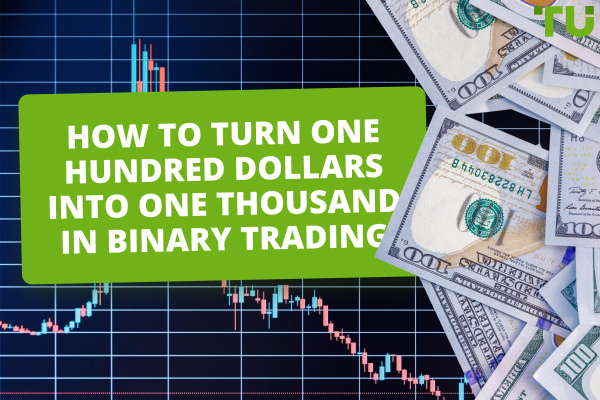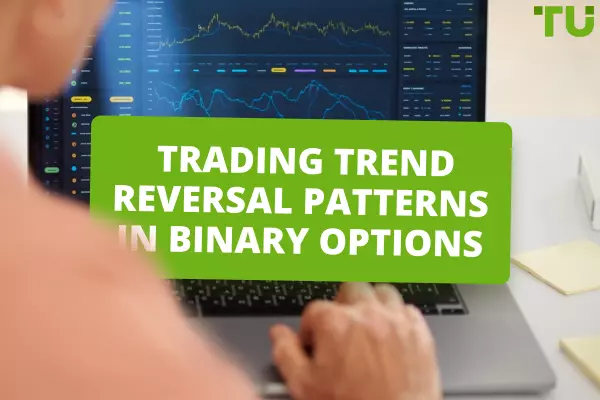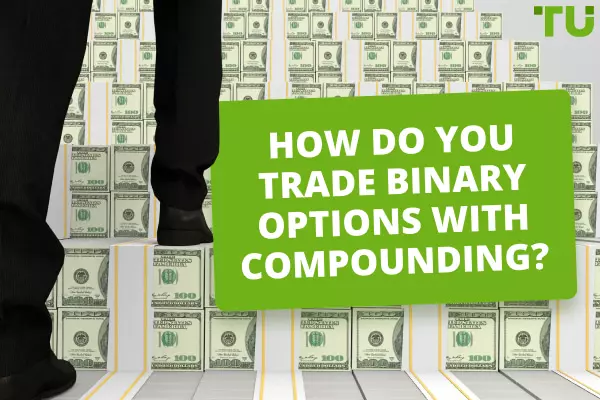Binary Options Payouts Explained
A payout percentage or rate in binary options represents the potential profit traders can earn on a successful trade, usually shown as a percentage of their initial investment. The payout rate typically ranges from 60% to 95%, depending on the broker’s conditions and the trading instrument.
A payout percentage in the context of binary options refers to the profit or return you can earn on a successful trade. It represents the percentage of your initial investment that you'll receive if your binary option expires in the money.
Payout percentages can vary from one binary options broker to another and are an essential factor to consider when assessing the potential profitability of a trade.
Start trading binary options right now with Pocket Option!What is a payout percentage in binary options trading?
In binary options trading, a payout percentage, also referred to as a return on investment (ROI) or profit percentage, represents the amount of money a trader stands to make if their binary option expires in the money. It is usually expressed as a percentage of the initial investment.
Payout percentages can vary between different binary options brokers and are basically specified for each type of option or trade. These percentages are an important factor to consider when evaluating the potential profitability of a trade.
Higher payout percentages can mean a greater profit potential, but they may also come with higher associated risks.
The payout percentage is set by the broker and can vary depending on the underlying asset, the expiration time, and the risk of the trade.
-
Payout percentages in binary options typically range from 60% to 95%.
-
Payout percentages are usually higher for options with shorter expiration times.
-
Payout percentages are mostly lower for options with more volatile underlying assets.
Example
Let's say you decide to trade a binary option on the price of gold.

PocketOption.com
You invest $100 in a binary option contract with an 80% payout percentage.
There could be two outcomes in a single trade. These outcomes are as follows:
Outcome 1
If you predict that the gold price will go up and it does go up as expected, the trade is successful. In this case, you will receive an 80% payout on your $100 investment.
Payout = Initial Investment x Payout Percentage
Payout = $100 x 80% = $100 x 0.80 = $80
So, if the trade is successful, you will receive a payout of $80, making a profit of $80 on your $100 investment.
Outcome 2
If your prediction is incorrect, and the gold price does not go up as expected, you will lose your entire initial investment of $100.
If you are looking forward to understanding how to make money with binary options trading, you can go through this article: How To Make Money With Binary Options?
How does the payout percentage affect binary options trading?
The payout percentage plays a crucial role in binary options trading as it directly affects the traders' potential profits and risk management. Here's how it influences binary options trading:
-
1
Profit Potential: A higher payout percentage means you can earn more profit if your trade is successful.
-
2
Risk-Reward Ratio: Payout percentage is closely tied to the risk-reward ratio. Traders often assess the risk associated with a trade based on the potential profit. Higher payout percentages can provide a more favorable risk-reward ratio, which may make certain trades more appealing.
-
3
Decision-Making: When choosing between different binary options trades, traders consider payout percentages as a factor. Higher payouts can make a trade more attractive, but they may be linked with a higher likelihood of the trade expiring out of the money.
-
4
Risk Management: Lower payout percentages may be considered when the primary focus is risk management. While they offer smaller profits, they may also have a higher probability of success, making them a suitable choice for risk-averse traders.
-
5
Broker Selection: Traders often compare binary options brokers based on their offered payout percentages. Different brokers may offer varying payout percentages for the same type of trade, so selecting the right broker is essential to maximize potential profits.
-
6
Traders should carefully consider the payout percentages offered by brokers and align them with their risk tolerance and trading strategies.
-
7
If you are considering binary options trading as an option to start your career, here's a detailed guide to understand what binary options trading is.
Best binary options brokers
Conclusion
By understanding how the payout percentage affects potential profit and loss, investors can make more informed trading decisions.
When engaging in binary options trading, it's essential to strike a balance between payout percentages, risk, and reward. Traders should carefully evaluate the payout percentages offered by different brokers, consider their own risk tolerance, and align their trading strategies accordingly.
Understanding the role of payout percentages is a critical aspect of making informed decisions and achieving success in the binary options market.
FAQs
What is payout in binary options?
In binary options, "payout" is the profit you earn if your trade is successful, usually expressed as a percentage of your initial investment.
How do binary options brokers generate payouts for clients?
Binary options brokers generate payouts for clients from their revenue and the difference between winning and losing trades.
How to do market analysis for binary trading?
Market analysis for binary trading involves studying asset prices, analyzing charts, trends, and news to make informed predictions about price movements.
What is the profit percentage of binary options?
The profit percentage in binary options varies by broker and trade type but is often expressed as a percentage of the initial investment. It can range from 60% to 95% or more for successful trades.
Glossary for novice traders
-
1
Broker
A broker is a legal entity or individual that performs as an intermediary when making trades in the financial markets. Private investors cannot trade without a broker, since only brokers can execute trades on the exchanges.
-
2
Trading
Trading involves the act of buying and selling financial assets like stocks, currencies, or commodities with the intention of profiting from market price fluctuations. Traders employ various strategies, analysis techniques, and risk management practices to make informed decisions and optimize their chances of success in the financial markets.
-
3
Options trading
Options trading is a financial derivative strategy that involves the buying and selling of options contracts, which give traders the right (but not the obligation) to buy or sell an underlying asset at a specified price, known as the strike price, before or on a predetermined expiration date. There are two main types of options: call options, which allow the holder to buy the underlying asset, and put options, which allow the holder to sell the underlying asset.
-
4
Binary options trading
Binary options trading is a financial trading method where traders speculate on the price movement of various assets, such as stocks, currencies, or commodities, by predicting whether the price will rise or fall within a specified time frame, often as short as a few minutes. Unlike traditional trading, binary options have only two possible outcomes: a fixed payout if the trader's prediction is correct or a loss of the invested amount if the prediction is wrong.
-
5
Risk Management
Risk management is a risk management model that involves controlling potential losses while maximizing profits. The main risk management tools are stop loss, take profit, calculation of position volume taking into account leverage and pip value.
Team that worked on the article
Upendra Goswami is a full-time digital content creator, marketer, and active investor. As a creator, he loves writing about online trading, blockchain, cryptocurrency, and stock trading.
Dr. BJ Johnson is a PhD in English Language and an editor with over 15 years of experience. He earned his degree in English Language in the U.S and the UK. In 2020, Dr. Johnson joined the Traders Union team. Since then, he has created over 100 exclusive articles and edited over 300 articles of other authors.
Mirjan Hipolito is a journalist and news editor at Traders Union. She is an expert crypto writer with five years of experience in the financial markets. Her specialties are daily market news, price predictions, and Initial Coin Offerings (ICO).











